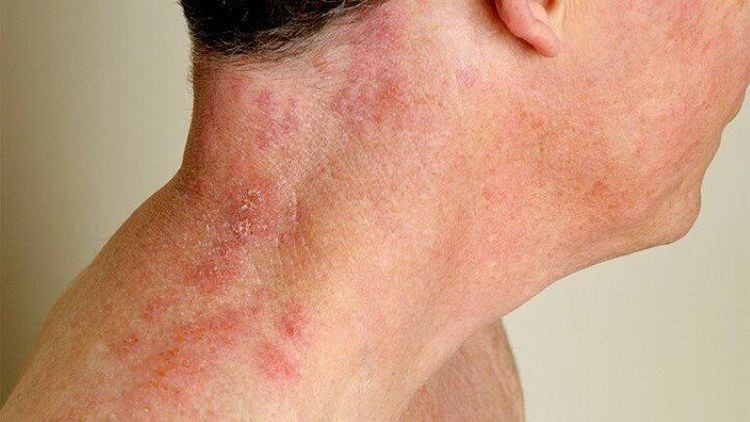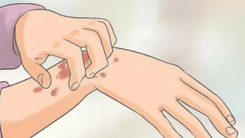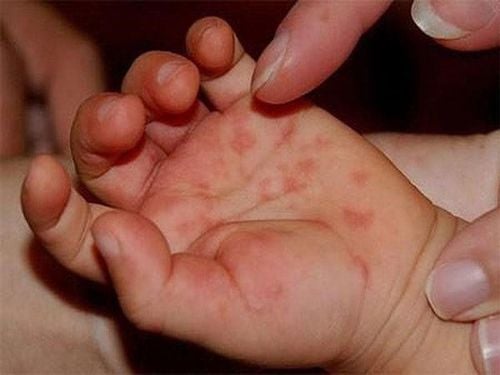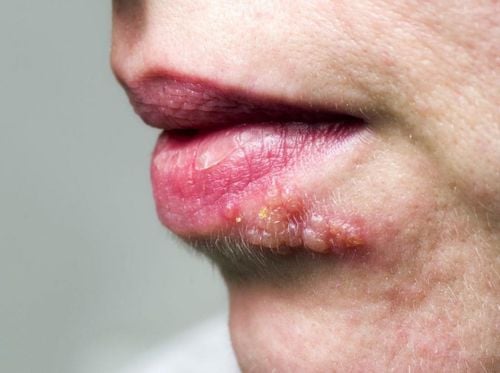Shingles is an acute infectious disease caused by the herpes zoster virus. The disease can occur at any age and in various locations on the body. Shingles in the ear is quite rare compared to other locations; however, patients should not be complacent as ear shingles have a high risk of complications and can cause meningitis.
1. What is ear shingles?
Shingles, also known as herpes zoster, is a familiar term to many Vietnamese people. The disease is caused by the herpes zoster virus, which is also the virus responsible for chickenpox. The herpes zoster virus travels along sensory nerves to the skin, creating patches of rash and easily ruptured blisters that cause pain and itching for the patient. Shingles can appear anywhere on the body, most commonly on the spine, torso, face, or ear area.
Ear shingles is a condition where the herpes zoster virus attacks the geniculate ganglion and follows the path of the VII and VIII cranial nerves, which are the facial and auditory nerves. Shingles in the ear is very rare, accounting for only 0.01% of the total number of patients visiting ear, nose, and throat clinics annually.

2. How to recognize shingles in the ear?
Patients with shingles in the ear will have symptoms similar to those with shingles, including fever from 38 - 39 degrees Celsius, body aches, itching, fatigue, and yellow urine. The pain appears 1-3 days before red rashes and blisters appear at the painful site.
For patients with shingles in the ear, the first sign of this disease is severe ear pain, feeling like a burn in the ear. This condition will appear along the ear canal, especially the skin in front of and behind the ear. The pain extends deep into the ear, lasting several days, and can extend to the mouth and throat, making eating and drinking feel like consuming very hot food.
In addition to the pain, small yellow fluid-filled blisters will appear in the ear area, scattered along the nerve branches, including the skin of the ear flap, auricle, and ear canal entrance. In some cases, due to the virus's effect on the VII cranial nerve, patients may experience facial paralysis on the same side as the blisters.

3. What are the effects of shingles in the ear?
Typically, the blisters in patients with ear shingles will burst and form scabs, then gradually heal. However, if the blisters have not yet burst and the patient rubs the blistered area, causing the blisters to burst and spread to nearby areas, the condition can become more complicated, leading to diffuse inflammation in the outer ear canal, cartilage inflammation, etc.
In fact, ear shingles usually progress well and heal after 2 weeks. However, if not treated promptly, ear shingles can lead to many problems for the patient, such as:
- Nerve pain, lifelong, especially when the weather changes or during the transition between day and night.
- Peripheral facial paralysis on one side.
- Irreversible sensorineural hearing loss.
- High fever, frequent vomiting, digestive disorders.
- A particularly dangerous complication of ear shingles is meningitis, which is extremely dangerous and, if not treated promptly, can lead to conditions such as limb paralysis, seizures, or even death.
Meningitis caused by the virus is often harder to recognize than other causes, so when experiencing shingles in the ear, patients should seek early treatment to avoid this complication

4. Treatment and prevention of ear shingles
When there are signs of suspected ear shingles, you should visit a reliable medical facility for an examination. The doctor will conduct an examination, and the diagnosis of ear shingles is mainly based on clinical manifestations. However, in some cases, the doctor may require the patient to undergo some necessary tests to confirm the diagnosis.
Regarding the treatment of ear shingles, depending on the condition, the doctor will prescribe appropriate medication for the patient. The most commonly used antiviral drug is Zovirax, with the dosage varying according to age, and the duration of use is from 7-10 days:
- For children: Take 2 tablets of 200mg/day
- For adults: Take 2 tablets of 800mg/day divided into 2 doses
In addition, the doctor will prescribe some antibiotics to prevent secondary infections, anti-inflammatory drugs, and pain relievers for the patient. In cases of facial paralysis, corticosteroids will be prescribed. Some medications are combined to help boost the immune system, such as B1, B6, B12, etc.
Topical medications prescribed for the treatment of ear shingles include anti-inflammatory ointments and Zovirax ointment, which have anti-inflammatory, pain-relieving, scar-preventing effects, and particularly limit secondary infections.
Ear shingles occur when the immune system is weakened, allowing the virus to invade and cause disease. Therefore, maintaining good health is crucial to avoid the disease. A healthy diet and regular exercise not only help prevent ear shingles but also improve overall health, reducing illness and disease.
Shingles is a dangerous disease caused by the chickenpox virus. To prevent the disease, in addition to maintaining health and a stable diet, patients should proactively get vaccinated against chickenpox.
With many years of experience in examining and treating diseases, Vinmec International General Hospital has become one of the major health care centers capable of screening and treating many specialized diseases. In addition, to improve service quality, Vinmec also offers chickenpox vaccination services. All vaccines at Vinmec are imported, have clear origins, and are stored in a GSP environment, ensuring good vaccine quality.
Therefore, if you need vaccination services, you can visit Vinmec International General Hospital for excellent service.
To arrange an appointment, please call … or make your reservation directly HERE. You may also download the MyVinmec app to schedule appointments faster and manage your reservations more conveniently.











